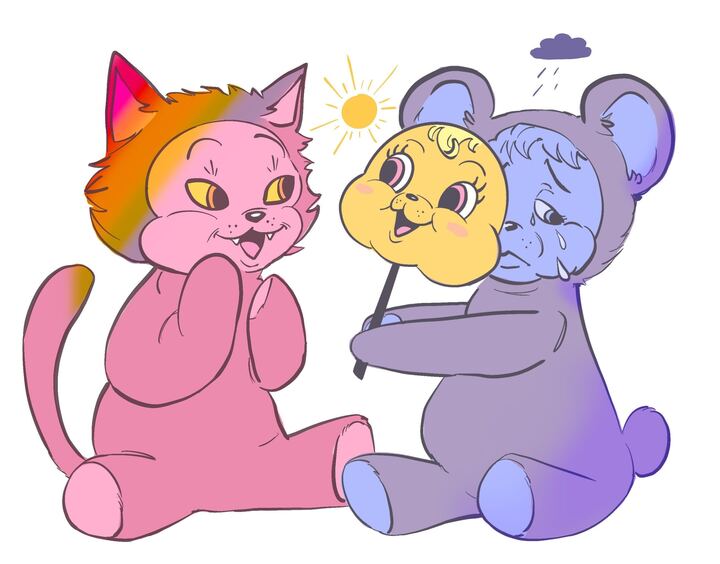
Like the programs and groups the students of the UA unwittingly fund with their student fees, the people of Arizona pay for a project they scarcely know about: Every person in Arizona who pays a water bill through the Central Arizona Project — Pima, Maricopa and Pinal counties — contributes to cloud-seeding experiments.
Discovered in 1946 by Bernard Vonnegut, brother to Kurt Vonnegut, silver oxide was found to possess properties which, when encouraged to interact with water vapor stored in clouds, increased the efficiency of precipitation. Such a solution to an environmental problem is easy — as The Arizona Republic reported in December, a study done in Wyoming used propane-fueled tanks to burn silver iodide and a flammable liquid before shooting the vapor into a passing snowstorm.
Increased snowfall was measured, and thus the six-year study was declared a success. However, the repercussions of such an act are less obvious than the result.
The Central Arizona Project has spent nearly $1 million on the study, a figure which includes the year 2015. Why does Arizona fund this project, if the studies are done elsewhere? Likely, all states drawing from the Colorado River are invested in the outcome of this study. Data collected since 2007 has revealed that the increased rain or snowfall could be anywhere from 5 to 15 percent.
According to The Arizona Republic, though, “… the study’s authors also said they threw out some data in order to achieve those results. Had that data been included, the experiment would have shown that seeding had no statistical impact on the snowfall, the study said.” The rest of the article celebrates the potential benefits of cloud-seeding, with this snippet seemingly unnoticed.
In an interview with Scientific American discussing the cloud-seeding operation China orchestrated in 2009, atmospheric research scientist Arlen Huggins had some thoughts on the process.
While the benefit of efficiently producing clouds could give China more water, it could not bring it out of a drought, Huggins said. However, timely use of cloud-seeding could yield extra water when saved in reservoirs for drier months. It is easy to see why the Southwest would be interested in such a project.
In the eye of the storm, you see trees uprooted with the homes of those who planted them. You see your life lift away, if you are lucky enough to be only the spectator of destruction. You know there is more than the walls of dust and dirt around you, because you have to — you have only been in danger for minutes, an hour at most. As everything must, you know this will pass.
The same cannot be said for the dangers that exist around us every day, the ones in our control, not because we set them in motion, but because every day we perpetuate the circumstances that led to their arrival. It’s easy; the danger did not start with us, the actions which allow it to continue have been ours since birth. It began with the actions of our recent ancestors, before the dawn of industrial revolution.
It continued with our grandparents, and others like them who invented quick fixes to the symptoms of a threat they had yet to realize — themselves. These quick solutions to environmental problems have often been cheap and immediately beneficial to humans. But this vision is short-sighted.
In the early ’60s, Rachel Carson published her book “Silent Spring,” a book publicizing the dangers of pesticides and their use on the crops we eat. The pesticide she focused on was DDT, and it is her insight and well-worded argument which helped create the public movement toward banning this harmful product. She focused on many aspects of this harmful chemical: the soil it leached into, the waterways which met with this soil, the birds and fish who ingested the pesticide and perished from it and the people who died from direct contact.
When talking about the dangerous amounts of pesticides in the environment, such numbers seemed negligibly small. They were measured by the parts per million, a seeming infinitesimally small amount. 500 parts per million is less than half a percent. Yet birds died and fish and waterways were poisoned. Once DDT entered the environment, it never left.
It is not until the question is asked — where does it go? — that we have any real answers to the dangers of yet another unnatural step by mankind to tame his world.
Similarly, under the Clean Water Act, silver iodide — the chemical used in cloud-seeding — is classified as a toxic pollutant. It’s also highly insoluble, meaning that it won’t simply dilute and disappear in the time between cloud-seeding operations. But because of the small amounts used in cloud-seeding and our lack of foresight, we continue to release it into the environment and hope it doesn’t become a problem.
Those who do bother to study this build-up, such as the Colorado National Park Service, have found that cloud-seeding with silver iodide leads to much higher instances of silver toxicity in the surrounding environment. In the ’80s, faced with the problem of rising measurements of silver toxicity in its own studies, the Centers for Disease Control and Prevention recommended halting or reducing cloud-seeding operations.
It’s a step most children are taught, and it’s easy enough to understand — when you hit a ball, or kick one, you follow through with your swing. When the Wyoming study ended with the soil silver iodide touches, claiming it already exists in the environment and the amount added is small enough not to be considered impactful, it’s as though they stuck their leg out to kick the rubber ball and walked to first base.
Hopefully, the outfield has their eyes open, and one of them will pick it up in time to knock that kid out of the game. Otherwise he might reach home base again, and cloud-seeding will become a regular practice in Arizona.
_______________
Kaitlin Libby is a junior studying environmental studies and information science. Follow her on Twitter.








